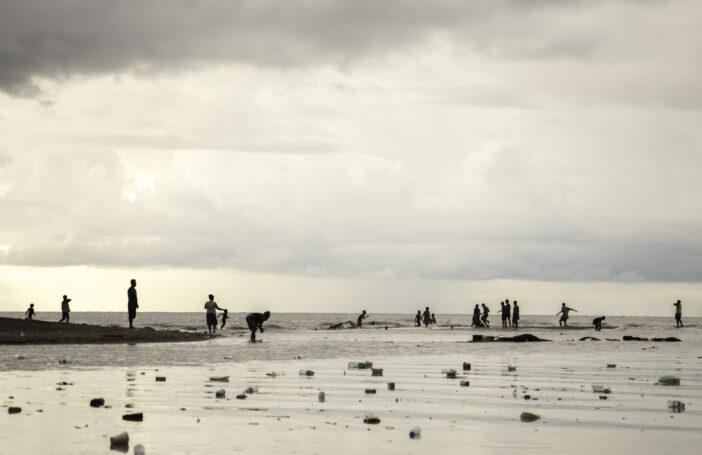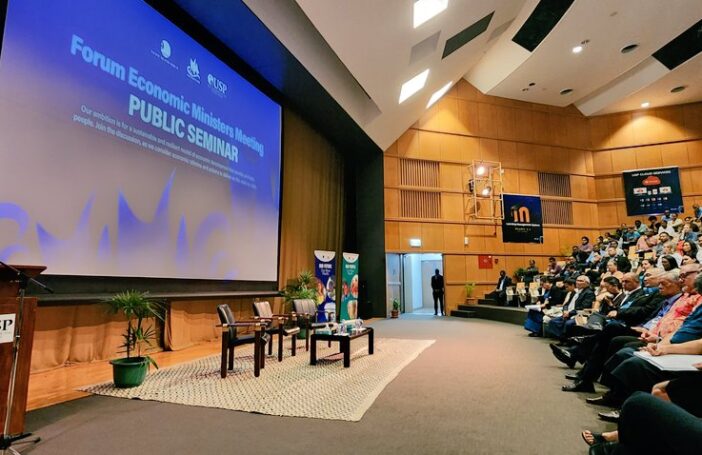Islands are back in vogue. It’s not that they ever disappeared but climate change in particular has brought islands to the fore of a global conversation on the way we think about human development. Cast as the canaries in the global climate coal mine – ironically, as the author of Islands at Risk? John Connell points out, as they have neither canaries nor coal – the vulnerability of islands has been ‘rediscovered’. This reawakening is, however, largely misguided. In the short term, he argues, the vulnerabilities that islands face are not those commonly associated with climate change and sea level rise but are in fact much closer to home.
Islands at Risk? purports to be a work of political ecology. It tells an explicitly comparative, iterative and anecdotal story about the changes occurring in 59 states and territories (variously Small Island Developing States or Small Island States). It will be of great interest to any reader concerned with the relationship between environment and development, both in island states but also more generally. Indeed, the sheer breadth of analysis makes the book a unique and worthwhile contribution. Organised thematically, it canvasses some well-known themes about island development – agriculture and fisheries – and other newer ones – urbanisation, international migration and environmental change. The book has a strong focus on the Pacific – this is the region Connell knows best but also where, he argues, there is a larger concentration of material (the limited availability of data is but one source of island vulnerability) – but the island countries of the Caribbean and Indian Ocean are not neglected. Remarkably, Connell has visited all but two of these entities and yet, despite this perhaps, the most extraordinary aspect of the book is the volume of secondary material brought to bear on the question at hand (the bibliography is close to 80 pages). This is the type of book scholars write after a lifetime of study.
The argument presented in the opening chapters will not come as a major surprise to long-time observers of island development. Both traditional and plantation agriculture is on the wane, fisheries promise much but deliver less, islands have few comparative advantages and those they do have are either too niche (nonu juice, postage stamps, successive series of the TV show Survivor), concentrated in certain countries and regions (tourism for example), are disproportionately susceptible to global economic shocks (tourism again) or have been increasingly frowned upon by larger states (tax havens, passport sales etc.). Integration into the cash economy has increased, as have islanders’ lifestyle expectations. Populations are rising too. The growing gap between expectations and reality causes unrest, crime, environmental degradation and political instability. Traditional social structures are eroding. Aid ensures that basic services continue but, on the whole, the modern state lacks the capacity to manage it. There is obviously great diversity – both within and between countries – but overall the pattern is unmistakable. It’s not quite ‘doomsday’ but the impression is unmistakably gloomy.
But, having established this, the book turns away from the conventional narrative. Islanders aren’t stagnant; nor are they unwilling victims of a colonial history and an international regime of markets and states. Many are, in fact, on the move. From the village to the city, from outer islands to inner islands, from capital cities to mainland centres, offline to online; the impression that emerges from the second half of this book is of mobility, dynamism and energy. Islanders, Connell reminds us, have always been migratory. The environments they inhabit have historically been fragile and vulnerable, and so, in the face of emerging modern precariousness, they have done what they have always done: adapted. These trends are not all positive – rapid urbanisation in places like Ebeye (Marshall Islands) and Tarawa (Kiribati), for example, create their own challenges, just as migration is seen by many, both within and outside islands, as a second best solution – but it belies the stereotype of passive victimhood.
It becomes increasingly clear that the real vulnerability that islands face is not specifically economic or environmental – although they are contributors – but stems from the uncertain future that islanders confront. All life is uncertain but life on islands is uniquely so. These uncertainties can stem from their geography – cyclones, earthquakes, volcanoes, tsunamis, and, for low lying atolls, sea level rise – and the size of their economies – growing integration into an international trading regime leaves them at the mercy of a system over which they have limited control. Mobility, which for many has become the answer to this puzzle, offers one solution by allowing islanders to diversify and adapt. But migration is, in and of itself, an uncertain enterprise; it involves loosening connections with culture, land and kin. Modern communications ensure that these bonds don’t necessarily break – Islander communities exist all over the world without islands – but the path forward isn’t clear, the options far from straightforward, and the choices rarely easy.
Climate change and sea level rise loom on the horizon as long term threats to island homelands but by the end of Islands at Risk? it becomes clear that this is only one in a series of uncertainties that islanders face. Moreover, the full brunt of this long term risk is born by low-lying atoll communities and so, for most, this threat is no less real than for the rest of us. Real vulnerabilities lie closer to home. The future is unclear and the past is only a semi-reliable guide. The lesson is that islanders will adapt but not necessarily in the ways or the places we have come to expect.
John Connell (2013) Islands at risk? Environments, economies and contemporary change. Cheltenham: Edward Elgar. hbk. ISBN: 978-1-78100-350-3. x+337pp (of which 74pp are references) + index.
Jack Corbett is a Postdoctoral Research Fellow at the State, Society and Governance in Melanesia Program, ANU.





